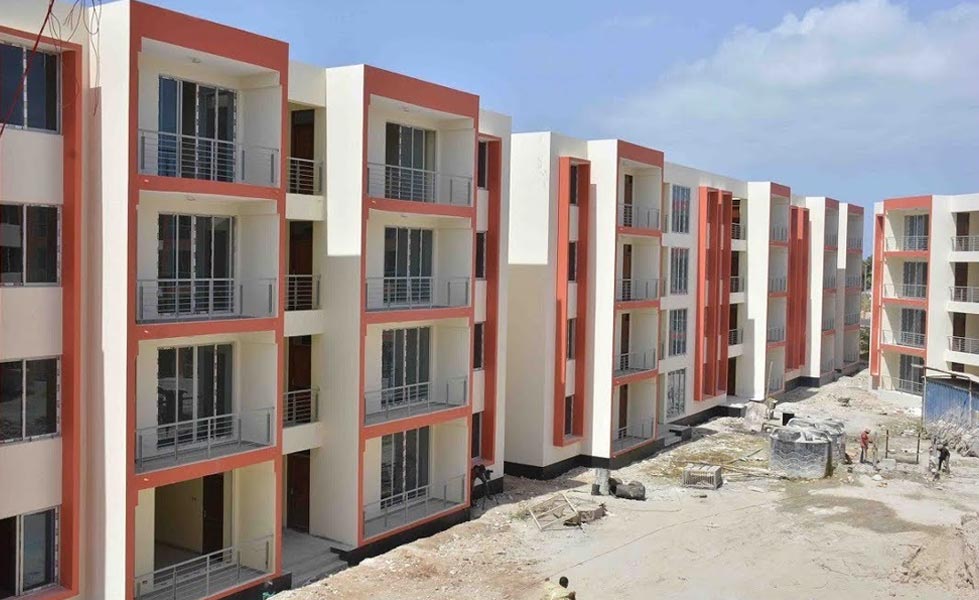In Kenya, the push for affordable housing is gaining momentum as the government and private sector collaborate to address the housing deficit. This newsletter explores the current state of affordable housing policies, their application, benefits, challenges, and solutions being implemented.
State of Affordable Housing in Kenya and its application
Kenya’s affordable housing sector faces challenges such as inadequate funding, limited land availability, and regulatory bottlenecks. However, recent policy shifts and innovative financing models are beginning to address these issues, paving the way for more inclusive housing solutions.
Kenya is implementing various policies to promote affordable housing, including tax incentives for developers, streamlined approval processes, and public-private partnerships. These measures aim to reduce construction costs and increase the supply of affordable homes.
Regulatory Framework
In Kenya, the National Housing Policy is fundamentally guided by the Constitution of Kenya, 2010, which guarantees the right to accessible and adequate housing under Article 43(1)(b). This constitutional mandate shapes the policy’s objectives, ensuring that housing strategies align with fundamental rights. The policy is further influenced by Kenya’s Vision 2030, which sets ambitious targets for improving housing conditions and expanding affordable housing access, and the Big Four Agenda, which aims to deliver 500,000 affordable housing units by 2022.
Additionally, the National Housing Policy is supported by the National Housing Corporation Act, which defines stakeholder roles in housing development and emphasizes sustainable urban planning. The policy promotes Public-Private Partnerships (PPPs) to enhance resource use, innovation, and efficiency and focuses on sustainability and inclusivity to meet the needs of diverse populations. The 2004 Kenya National Housing Policy provides a foundational framework, stressing improved housing conditions, increased affordability, and efficient land use, ensuring that the policy addresses housing needs in line with national and international development goals.
Advantages of Kenya’s Affordable Housing Policy
- Increased Housing Supply: The policy aims to address Kenya’s housing deficit by increasing the availability of affordable housing units. This helps meet the growing demand for housing, particularly among low- and middle-income families and alleviates overcrowding in urban areas.
- Economic Growth and Job Creation: The implementation of affordable housing projects generates significant employment opportunities in construction and related sectors. This not only boosts the economy but also provides livelihoods for many Kenyans.
- Urban Development and Infrastructure Improvement: The policy supports the development of planned and well-structured urban areas. Improved infrastructure, including roads, sanitation, and public services, enhances the quality of life for residents and contributes to orderly urban growth.
- Social Inclusion: By targeting affordable housing for low-income and marginalized groups, the policy promotes social equity and inclusiveness. It helps bridge the housing gap between different socio-economic groups and ensures that all Kenyans have access to decent living conditions.
- Enhanced Property Value and Community Development: The construction of affordable housing often leads to the development of surrounding areas, increasing property values and fostering community growth. This can lead to improved local amenities and services.
Challenges Facing Implementation
- Funding and Financial Constraints: Securing adequate funding for affordable housing projects remains a major challenge. The cost of land, construction materials, and infrastructure can be prohibitive, and there are often limited financial resources available for large-scale projects.
- Bureaucratic and Administrative Hurdles: The implementation of affordable housing projects is often delayed by bureaucratic inefficiencies and complex regulatory processes. These obstacles can slow down project approvals and hinder timely execution.
- Land Acquisition and Ownership Issues: Acquiring suitable land for affordable housing projects can be difficult due to land tenure issues, high land prices, and disputes over land ownership. These challenges can impede the development of new housing projects.
- Quality and Sustainability Concerns: Ensuring that affordable housing projects meet quality standards while remaining within budget can be challenging. There is a risk that cost-cutting measures might compromise the durability and sustainability of the housing units.
- Public-Private Partnership (PPP) Challenges: While PPPs are encouraged, there can be difficulties in establishing effective partnerships between the public and private sectors. Issues such as differing priorities, inadequate risk-sharing mechanisms, and lack of coordination can impact the success of these collaborations.
Overall, while Kenya’s affordable housing policy presents significant advantages in terms of increasing housing supply, stimulating economic growth, and promoting social inclusion, it faces substantial challenges related to funding, bureaucracy, land issues, quality control, and partnership dynamics. Addressing these challenges is crucial for the successful implementation and sustainability of the policy.
Solutions to the impediments facing the Affordable Housing policies in Kenya
To address the challenges in implementing Kenya’s affordable housing policy, the country can pursue several strategies:
- Funding and Financial Constraints– Diversify funding sources, including government allocations, international aid, public-private partnerships, and innovative financing like impact investing and green bonds. Attract private investment through tax incentives and subsidies, and adopt cost-effective construction methods such as prefabrication and modular construction to reduce costs.
- Bureaucratic and Administrative Hurdles– Simplify and streamline regulatory and approval processes with one-stop service centres and digital platforms. Enhance the capacity of government agencies for better project management and increase transparency to reduce corruption and ensure efficient resource use.
- Land Acquisition and Ownership Issues– Accelerate land reform and improve land registration systems to address tenure issues. Establish government land banks for affordable housing and involve local communities in land acquisition to build trust and resolve ownership concerns.
- Quality and Sustainability Concerns– Enforce strict quality standards and regulations with regular inspections. Promote sustainable and energy-efficient building materials and technologies, and provide training and certification for construction professionals to maintain high-quality standards.
Conclusion
Kenya’s affordable housing initiative aims to address the housing deficit and improve living conditions through increased supply, economic growth, and social inclusion. While policies and partnerships support these goals, challenges like funding, bureaucracy, land issues, and quality concerns remain. Solutions include diversifying funding, streamlining regulations, reforming land processes, and enforcing quality standards to ensure effective implementation and broader benefits.
Disclaimer:
Please note that the information provided in this article is for general informational purposes only and should not be construed as legal advice. It is always advisable to consult with a qualified legal professional to discuss your specific circumstances and obtain tailored legal counsel.





